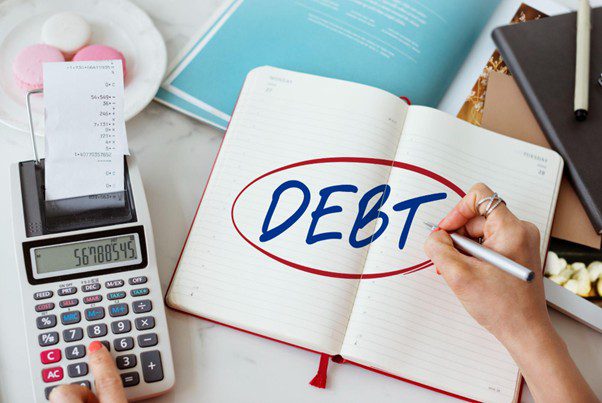Debt collection can be challenging for businesses of all sizes. Missing payments strain cash flow, and bad debt collections can pile up if they are not addressed. For healthy finances, it is essential to know how to manage all the overdue debt, whether you’re a small business owner or part of a debt recovery agency.

It is not just about chasing your payments. Effective debt collection involves using strategies to protect your business and clients. The proper techniques and tools can help recover overdue payments and prevent future issues. This guide will explore the 7 successful debt collection techniques to reduce bad debts.
1. Make Clear Credit Policy
First, clear rules and policies must be set before giving credit to any customers. It’s just like building a fence for your garden. There should be credit limits, payment terms for each customer, and late payment penalties. Imagine this: a bakery might give a new cafe a small credit limit until it proves it can pay. This technique helps to manage bad debt collection.
Before giving credit, look closely at the customer’s background. This is like checking the weather before going to a picnic. It will help you prepare for sunny or stormy weather. Keep reviewing their past payments and financial situation to assess reliability.
2. Foster Strong Customer Relationships
To boost bad debt collection, you should have strong customer relationships. This regular communication builds trust, which makes customers more likely to pay. Just think you are planting a seed with its care; they grow into partnerships.
Constantly personalize your communication instead of sending them a formal reminder. Sending emails or giving a small phone call can make a huge difference. It shows you care about them rather than prioritising your payment over others.
When discussing debtors with customers, use a nice tone instead of aggressive language, which helps clients avoid becoming defensive. Always concentrate on working together to solve difficulties.
3. Offer Payment Plans
Due to financial difficulties, some customers struggle to make debt payments. Flexible payment plans help to manage cash flow and ensure you to pay you on time. Divide large debts into manageable instalments. This reduces the customer’s burden and boosts timely payments.
For instance, dividing a $600 debt into three $200 instalments makes it bearable. Always document these plans. Include terms, deadlines, and costs to prevent misunderstandings.
4. Use Technology for Debt Collection
Nowadays, technology can help boost debt collection efforts. Tools like CRM software and automated reminders make the process run more smoothly. Tracking every client encounter in one location facilitates follow-ups.
Using a CRM system, you can monitor customer conversations, payment records, and debts. This information helps with customer contact decisions and manages debt collection near me.
For example, if someone often pays late, you may change your strategy. Identifying payment trends can also help reduce bad debts. Consider automated account invoicing management software. These tools monitor payments, solve disputes, and track payments.
5. Train Your Collection Team
Your collection team is an important part of your debt recovery activities. They can effectively collect debt and maintain good customer relations with the right tools and training. Imagine them being confident and ready for every interaction. It produces better outcomes.

Assemble your group to role-play encounters with customers. This will improve communication and develop empathy. For instance, it will teach your team how to address issues and devise solutions. Such hands-on practice will make them more relatable and capable.
6. Take Professional Debt Recovery Services
Sometimes, collecting debts can occasionally be challenging. So, find a bad debt collection agency that can assist you. These agencies are proficient at debt collection. They have the expertise and tools as needed. This enables you to concentrate on your business.
Before selecting a debt recovery agency, check its history and experience. Look for a debt recovery agency near me with a good reputation and similar values. It’s a relief to know collections are in good hands.
7. Monitor and Adjust Your Strategies
Bad debt collection requires customized strategies. Routine monitoring enables essential adjustments, identifying what works and what doesn’t. This flexibility is the secret to long-term success in bad debt collection.
Tracking KPIs, such as recovery rates and collection times, provides clear insights. These metrics highlight areas for improvement and will optimise your debt recovery services to meet your business needs better.
Frequently Asked Questions (FAQs)
Can a debt recovery agency help with old unpaid bills?
Yes, It can. Agencies employ particular techniques to increase the collection times.
Will a debt recovery agency harm my client relationships?
Not necessarily. Many agencies communicate respectfully and aim to keep relationships.
Are there tools to automate payment reminders?
Yes. Various tools can automate reminders, track payments, and spot at-risk clients. They simplify collections and improve cash flow.
Conclusion
To maintain cash flow and business stability, bad debts must be reduced. With these seven strategies, you may improve customer interactions and debt collection. Chasing payments isn’t the only strategy for effective bad debt collection.
Consider working with debt recovery services to ease debt recovery. Whether you need to collect bad debts or local debts. Taking action today can improve your business’s financial health.

